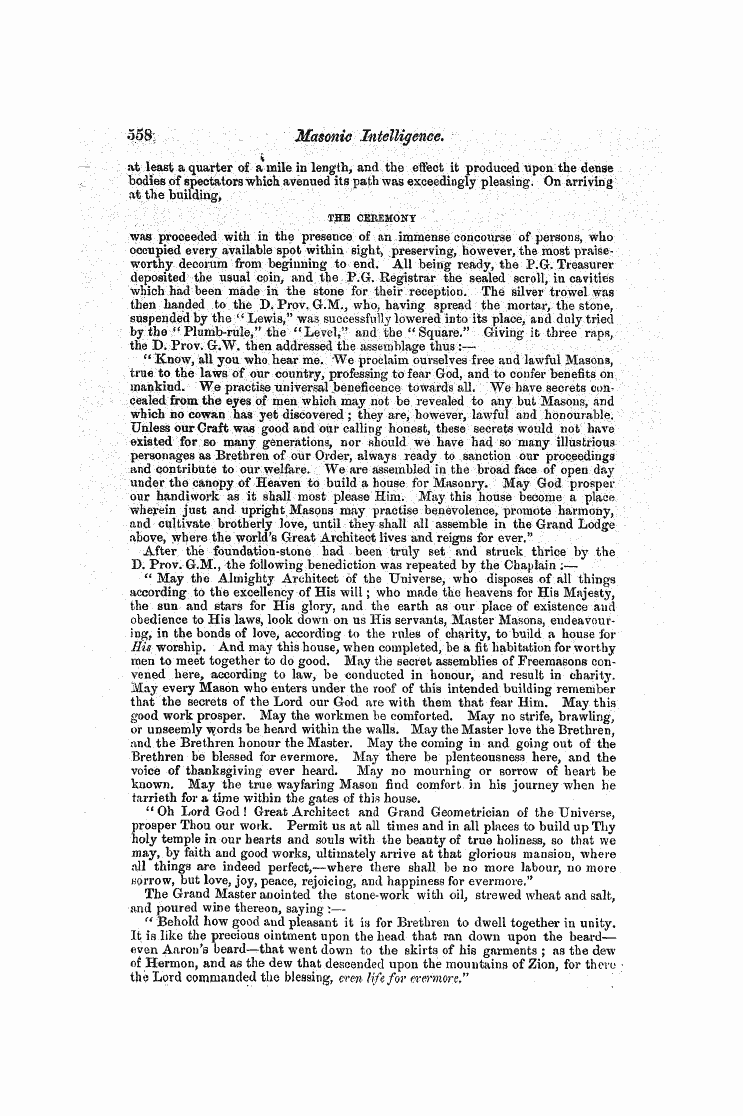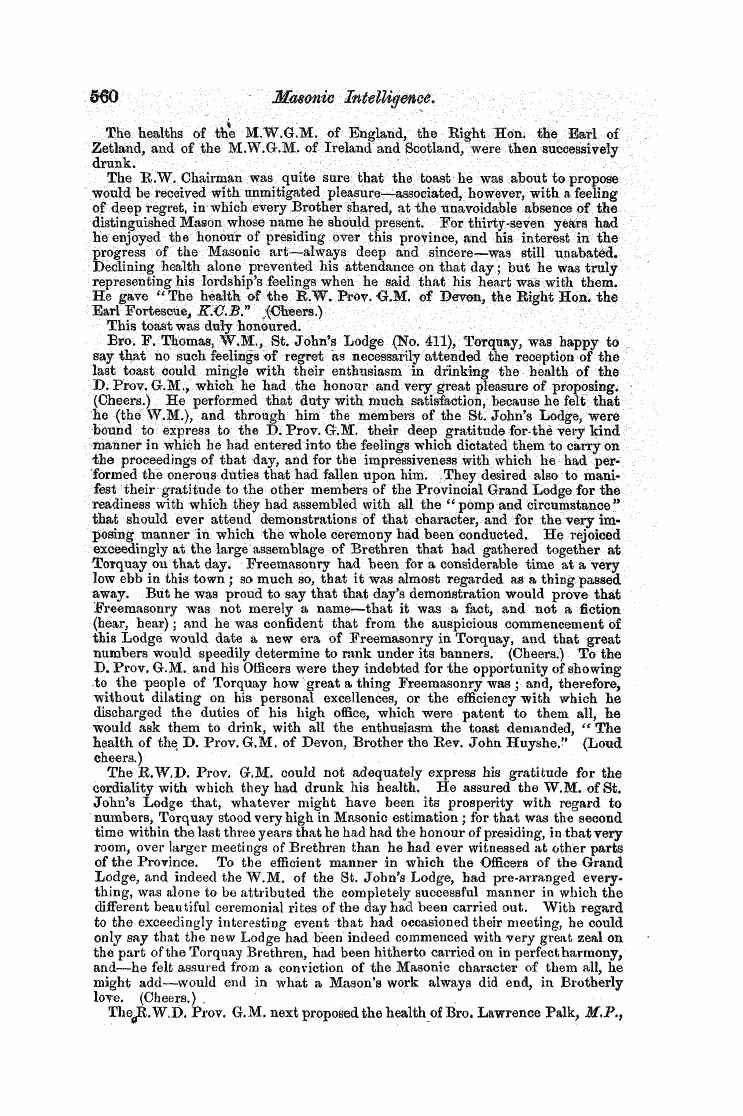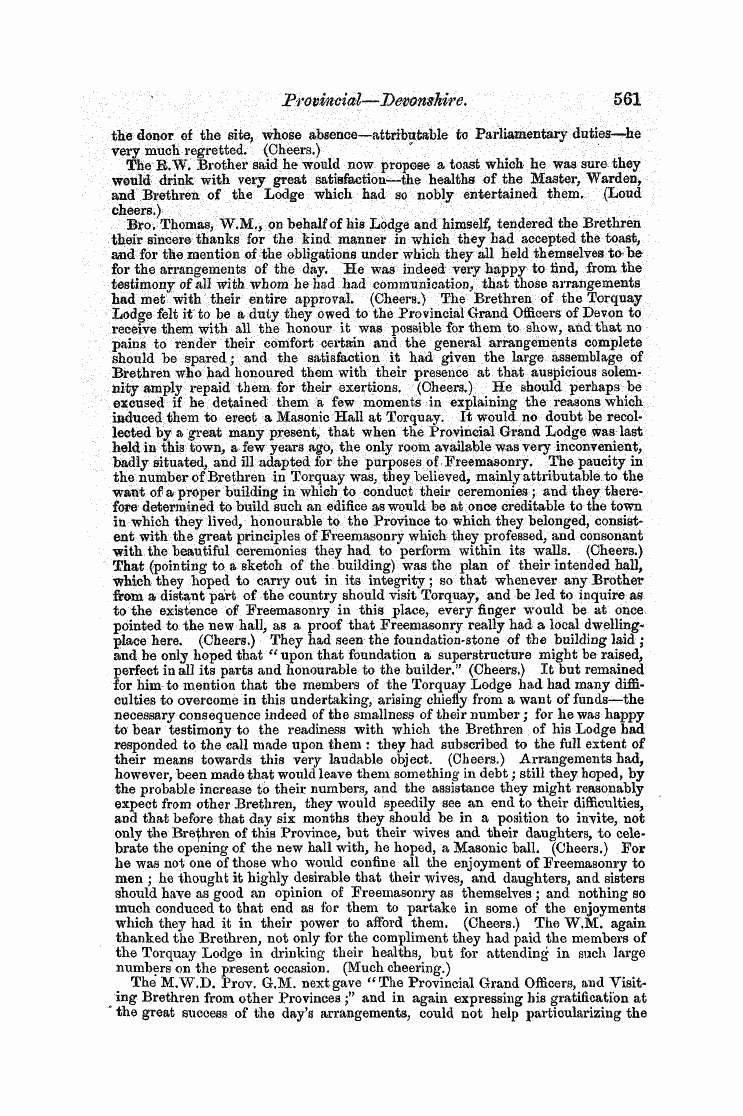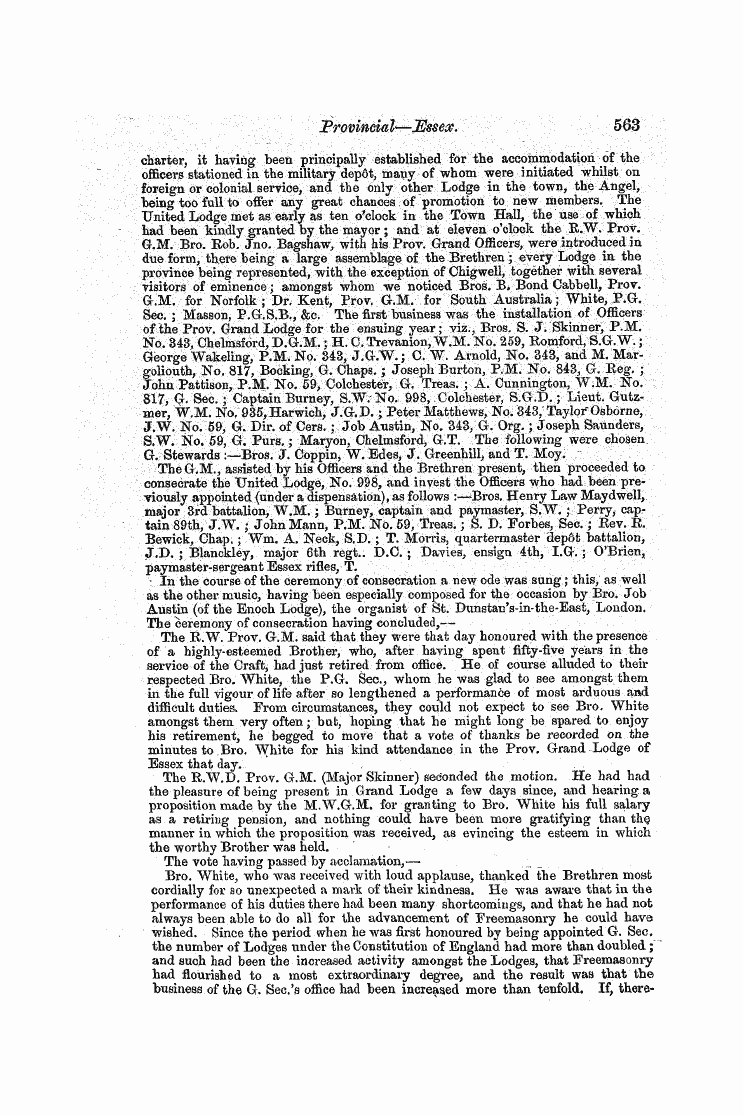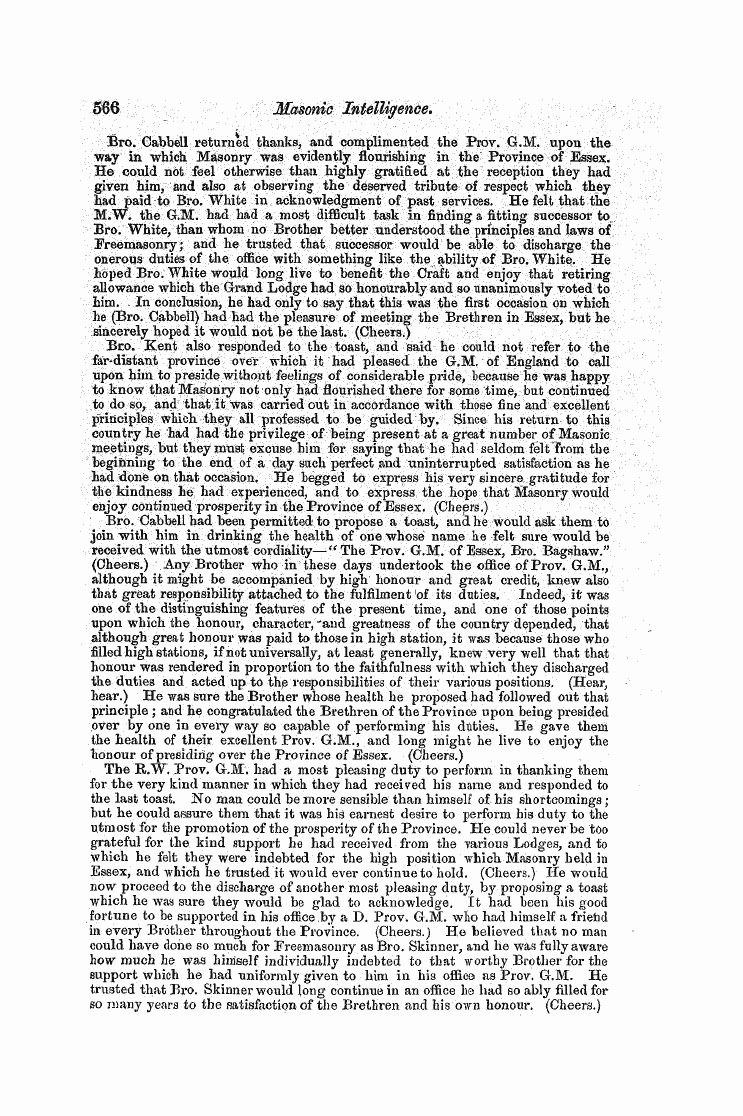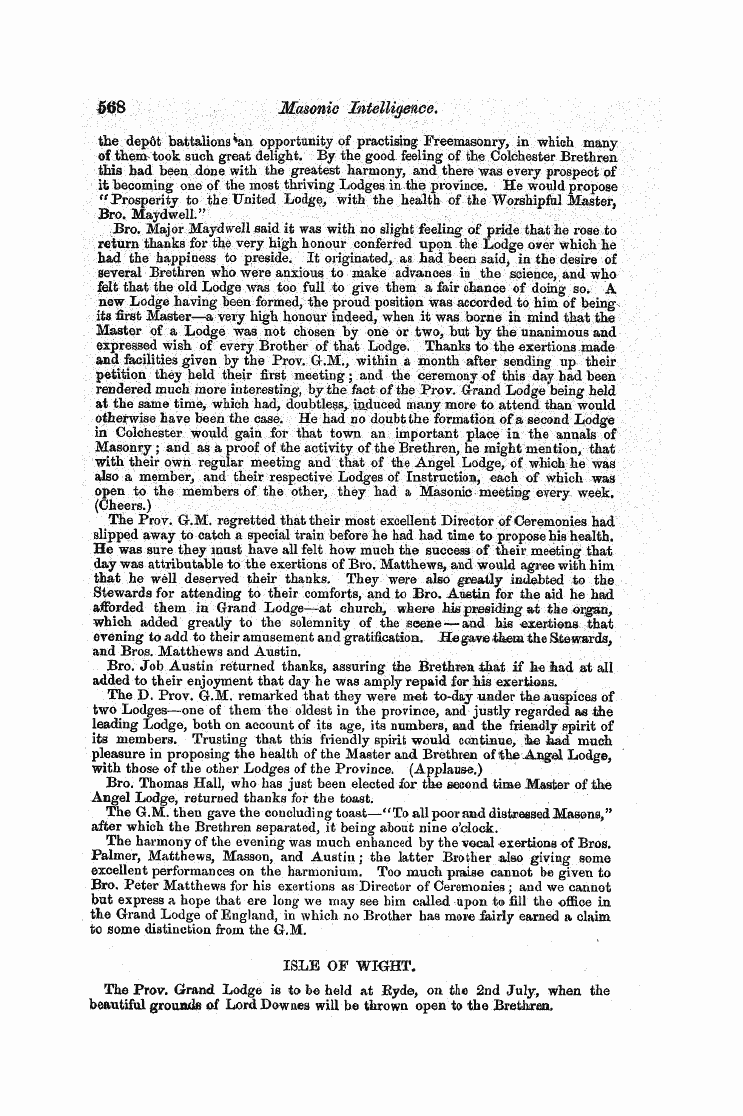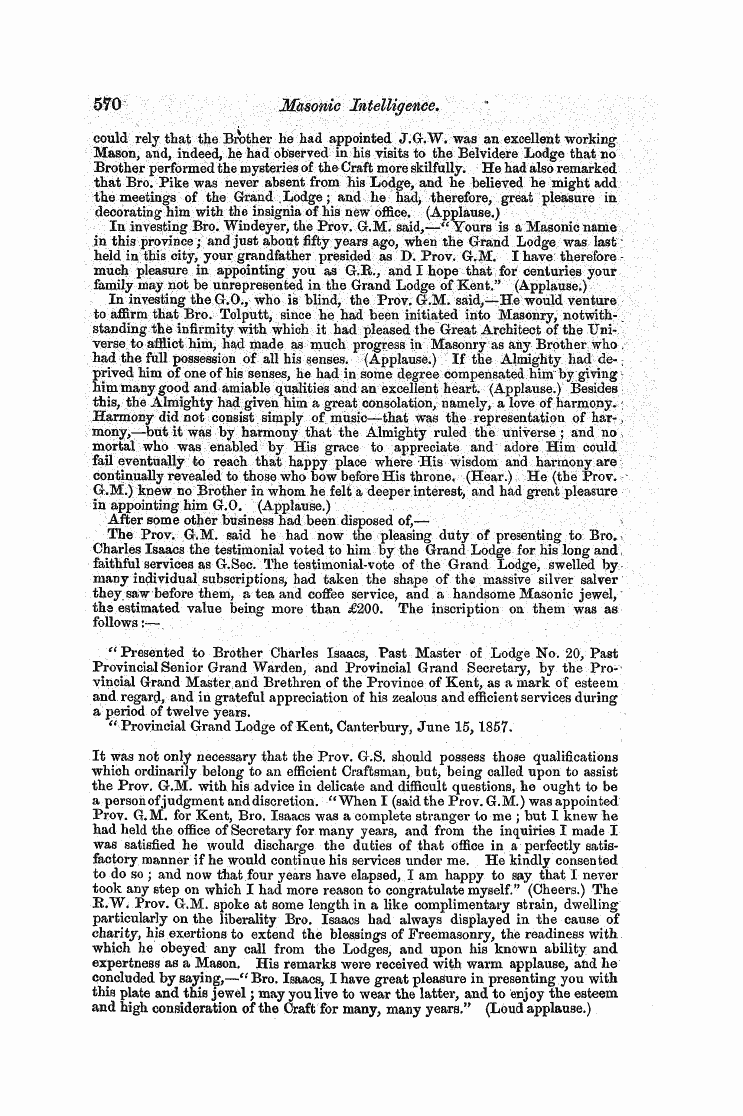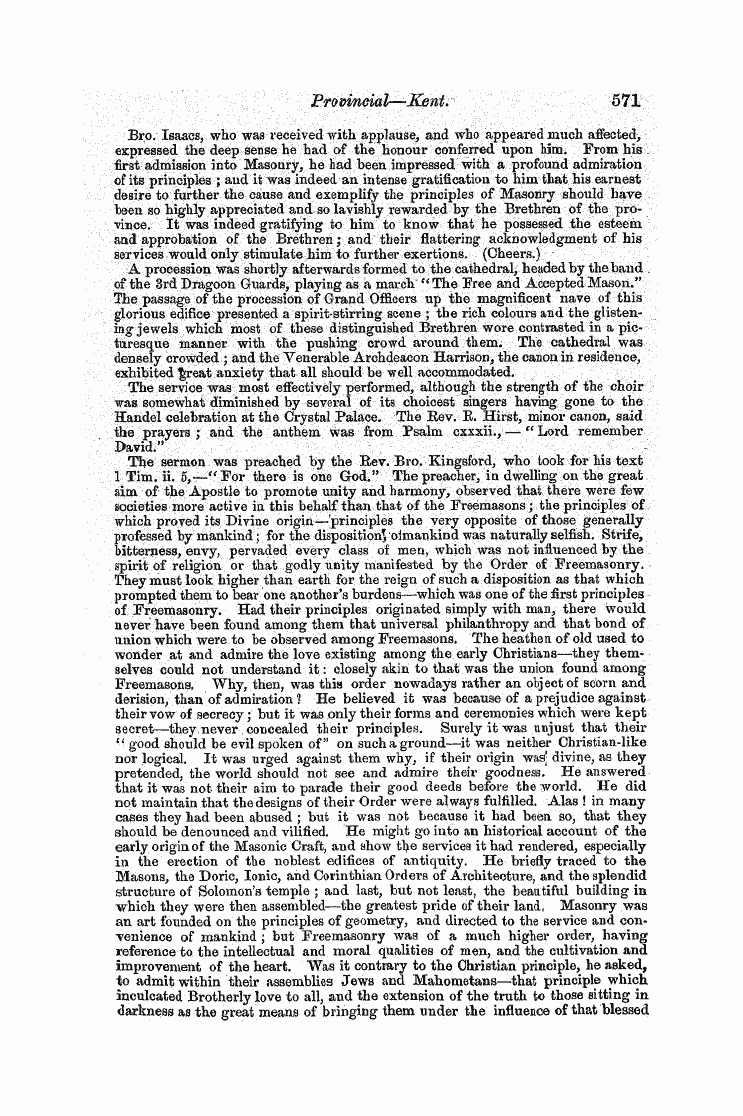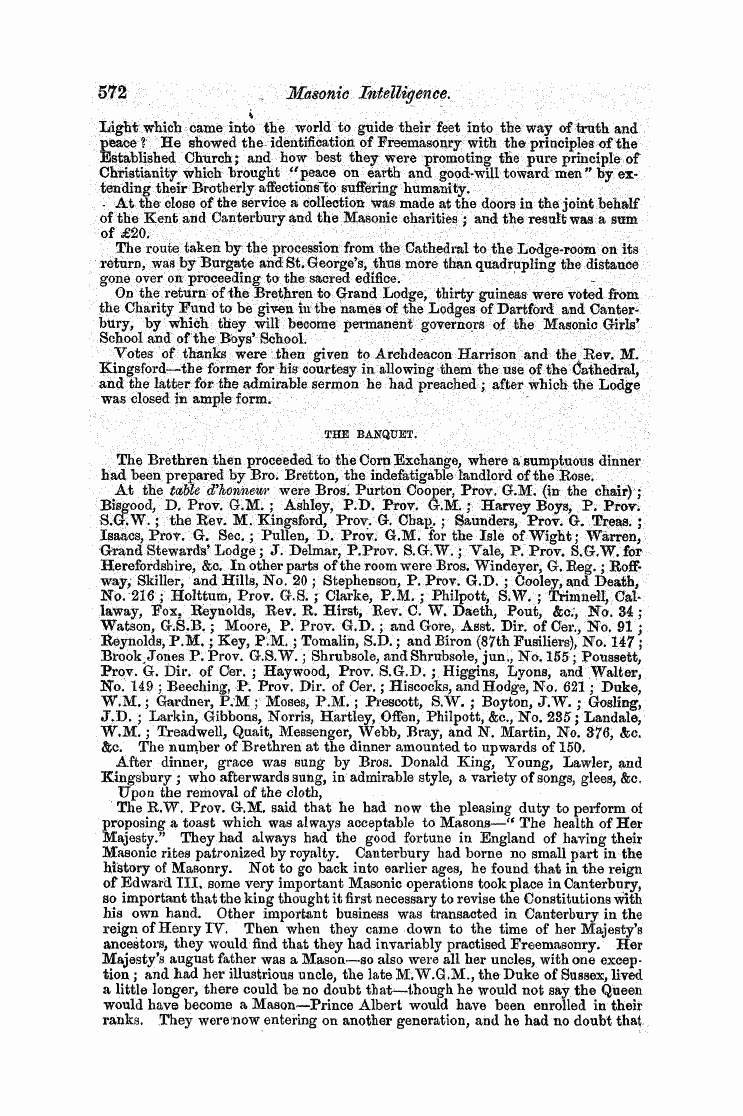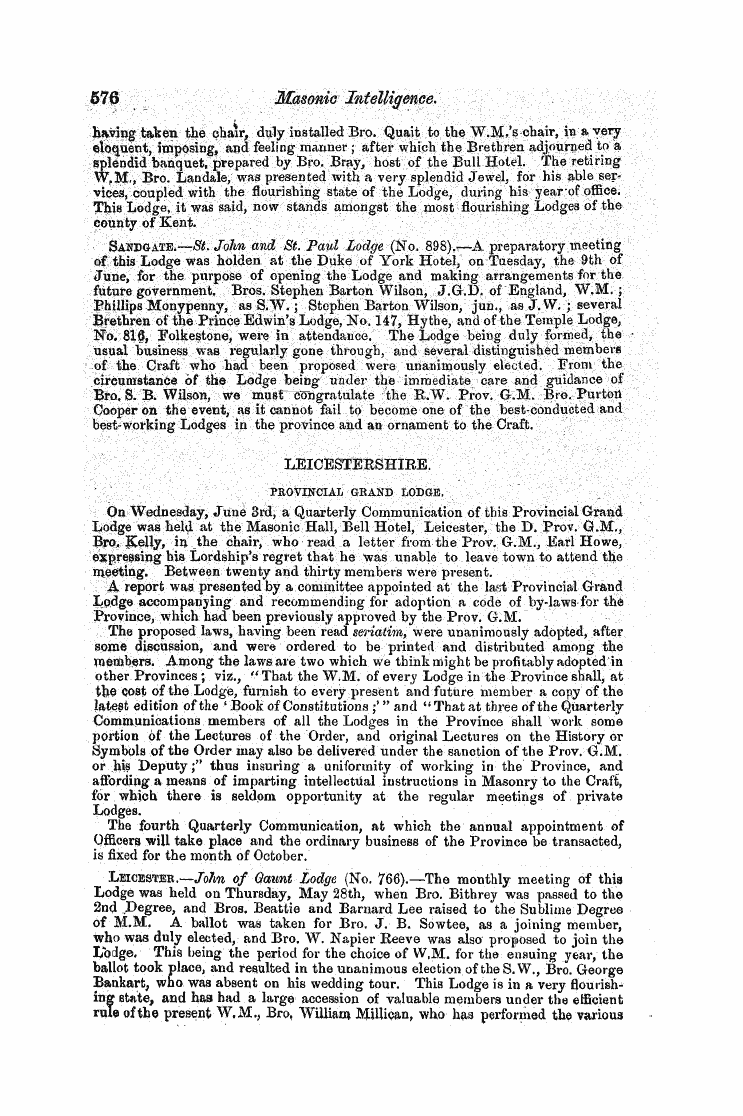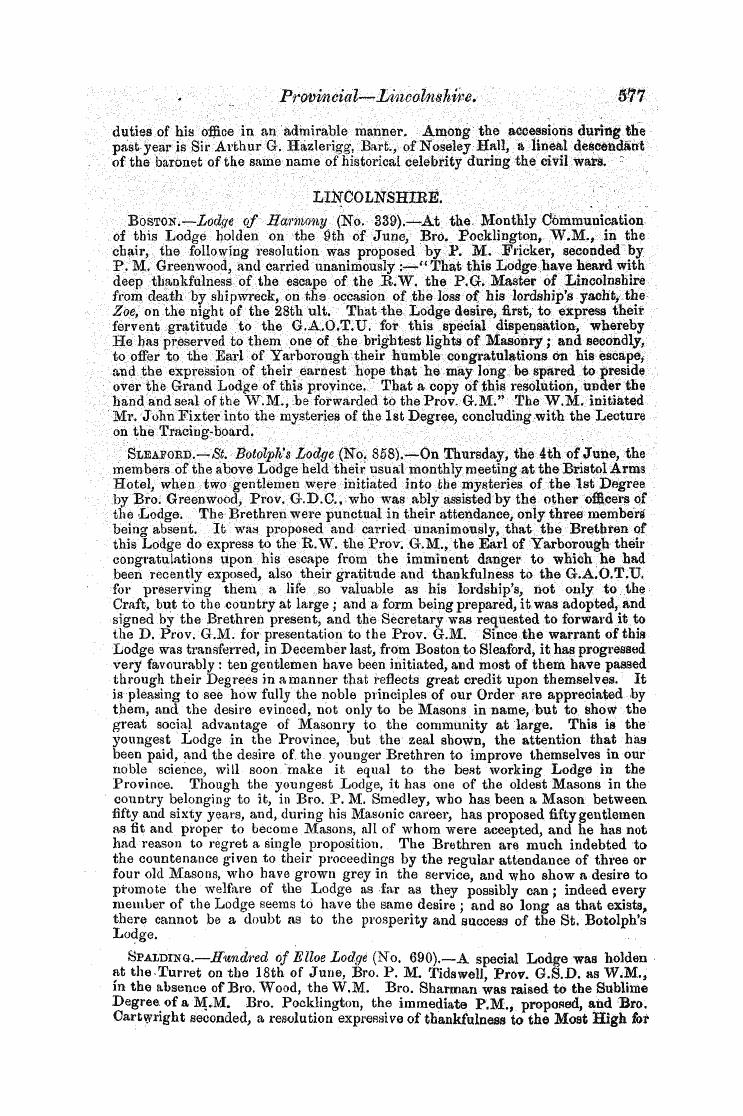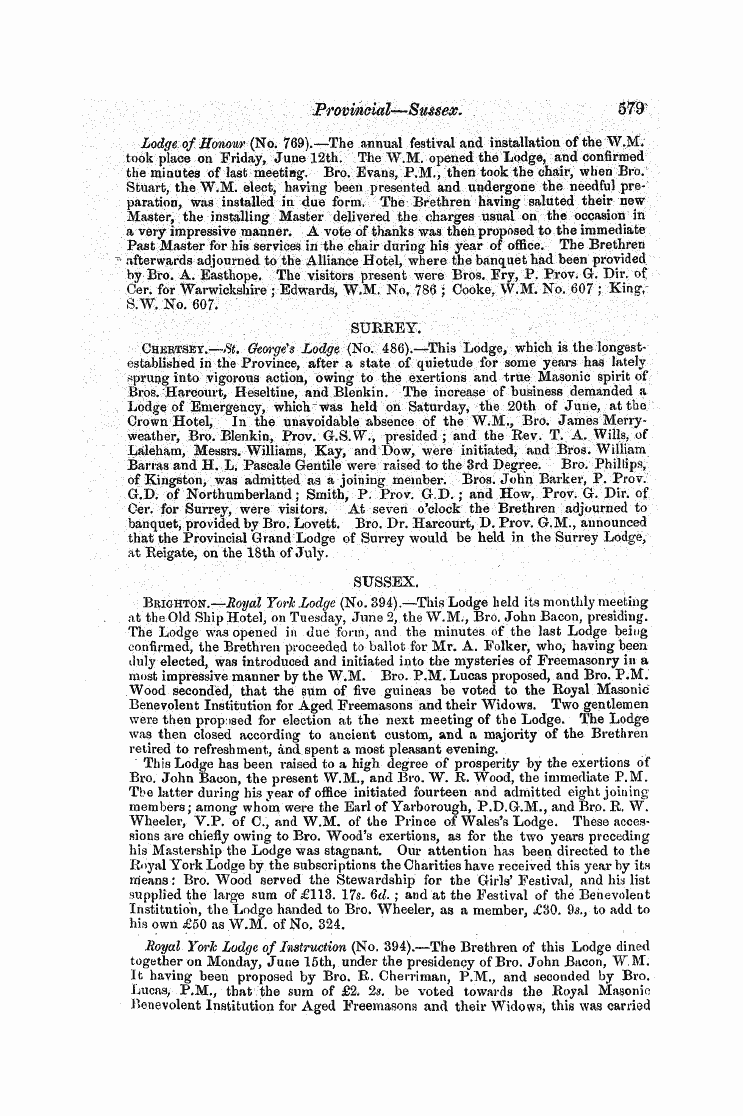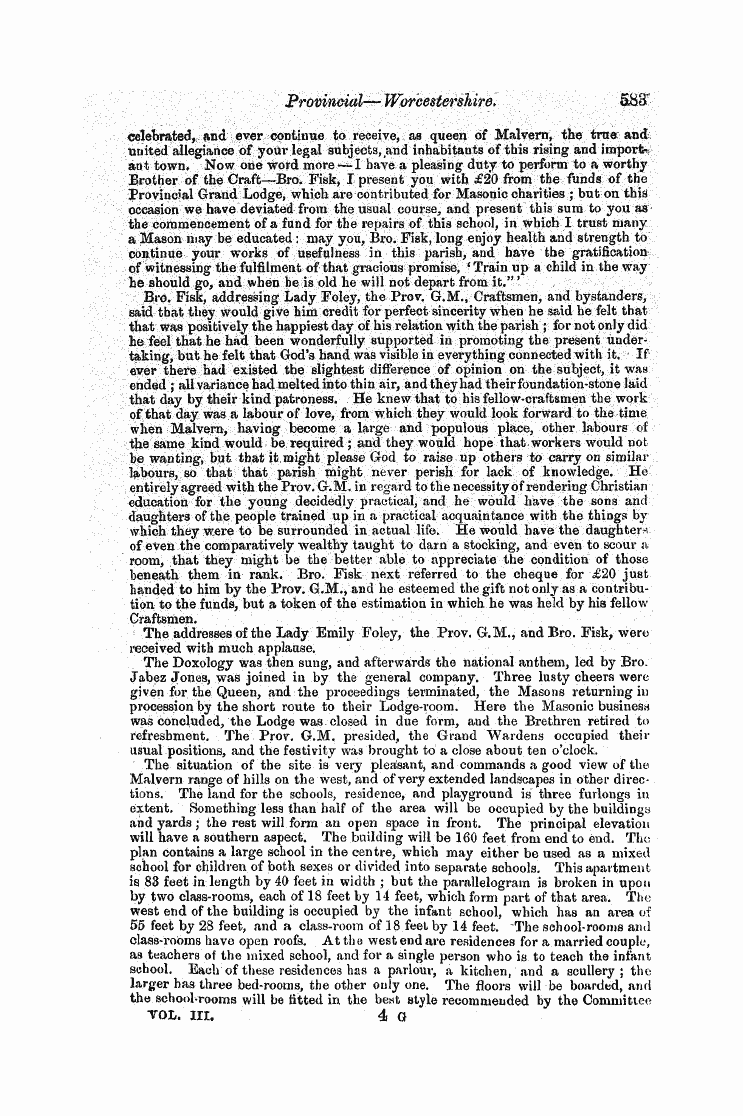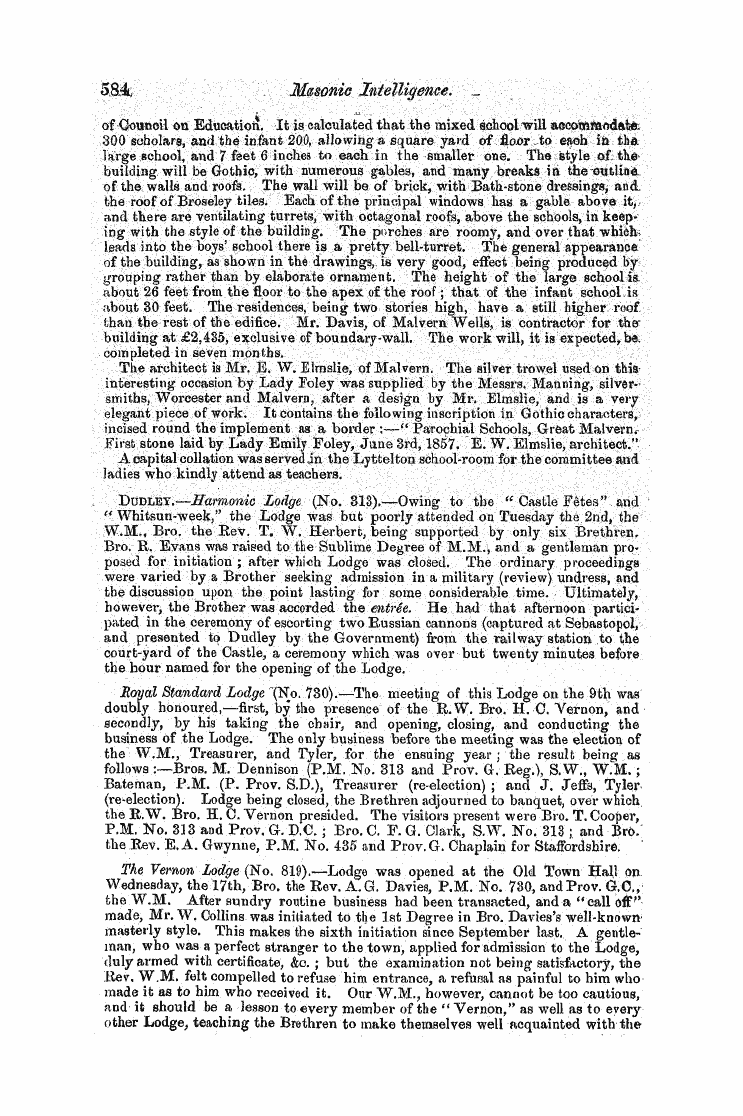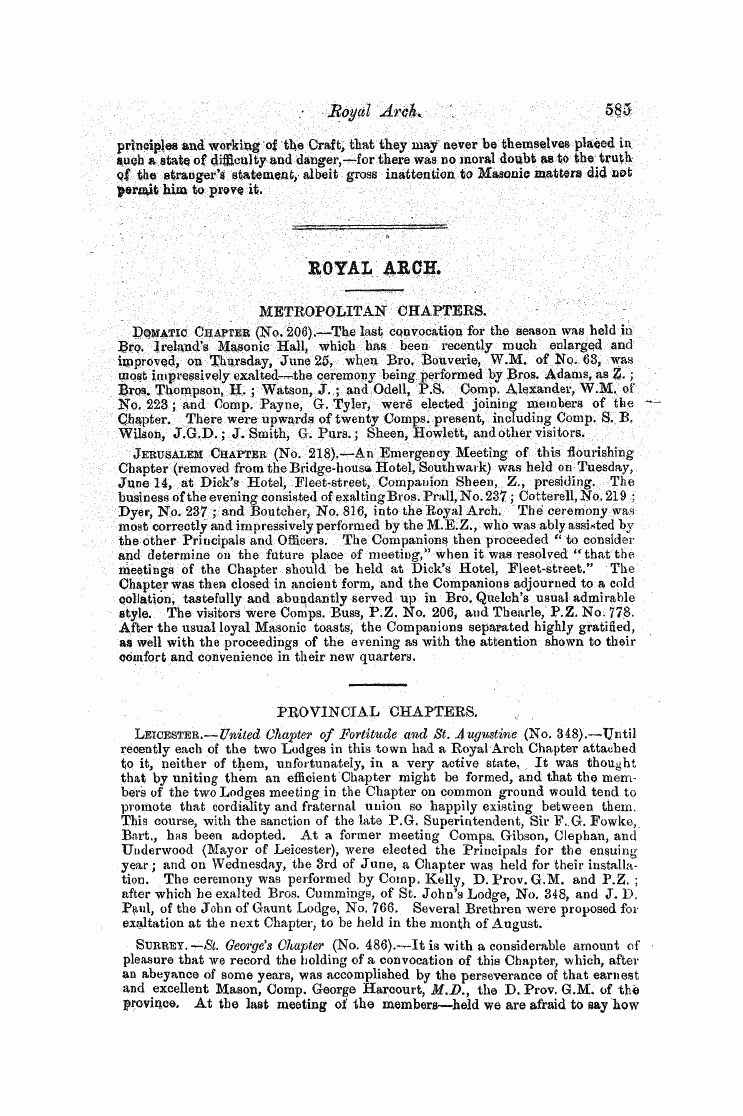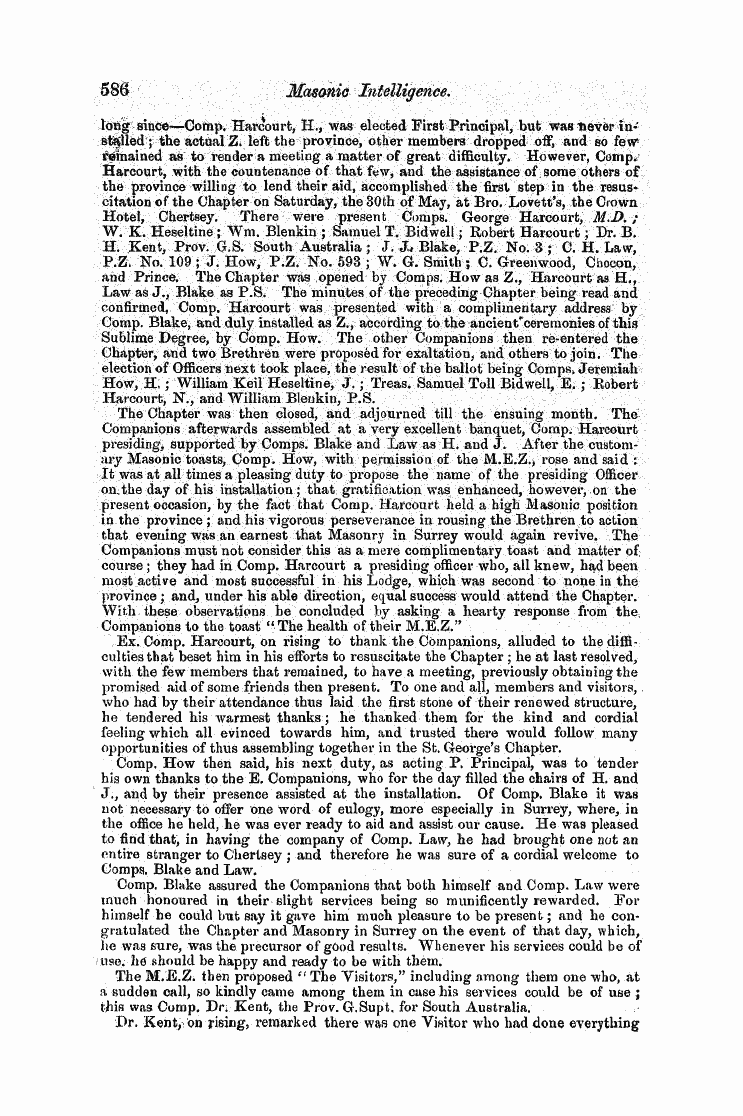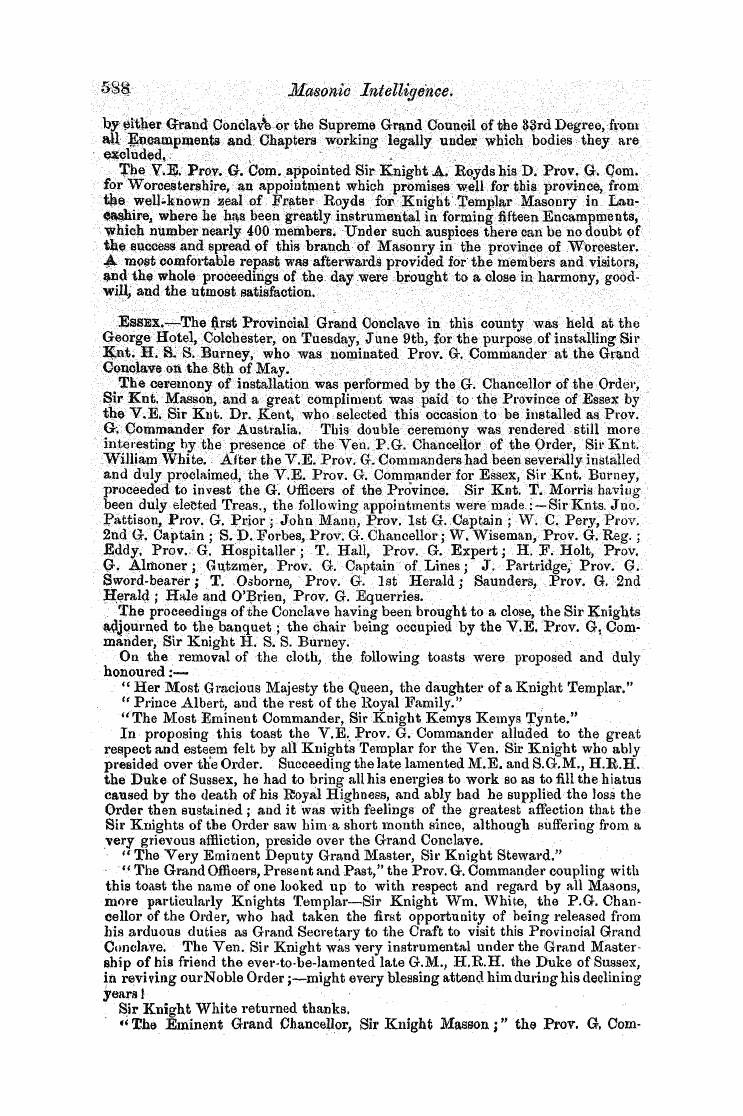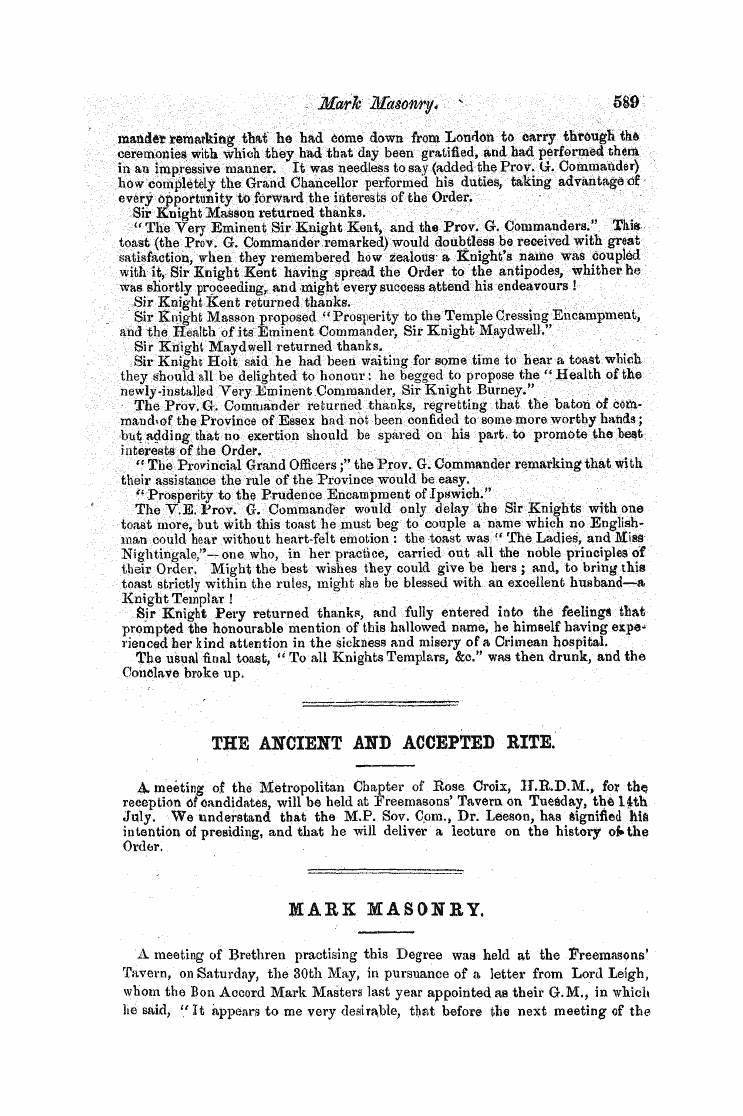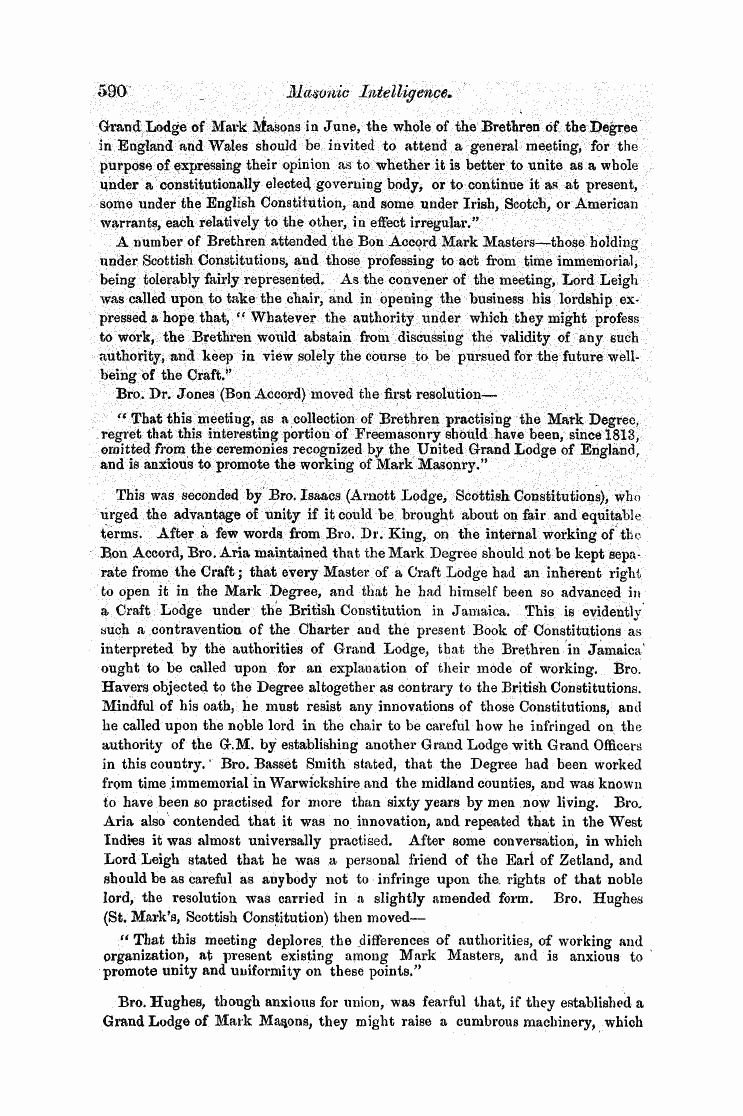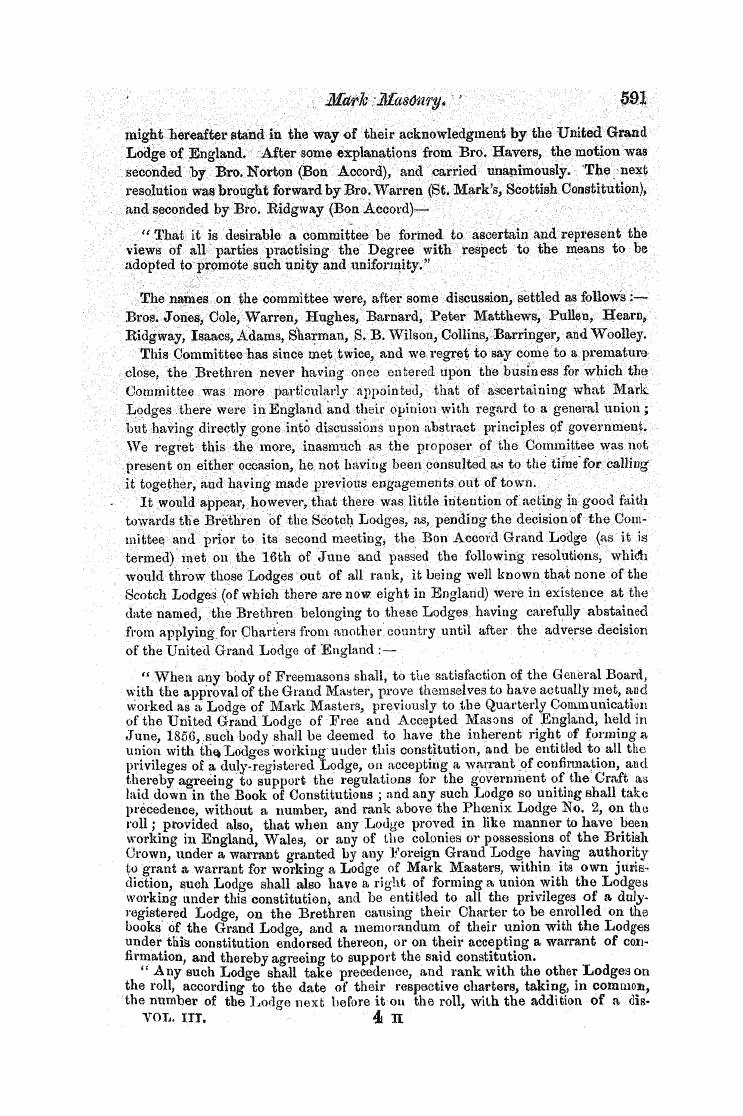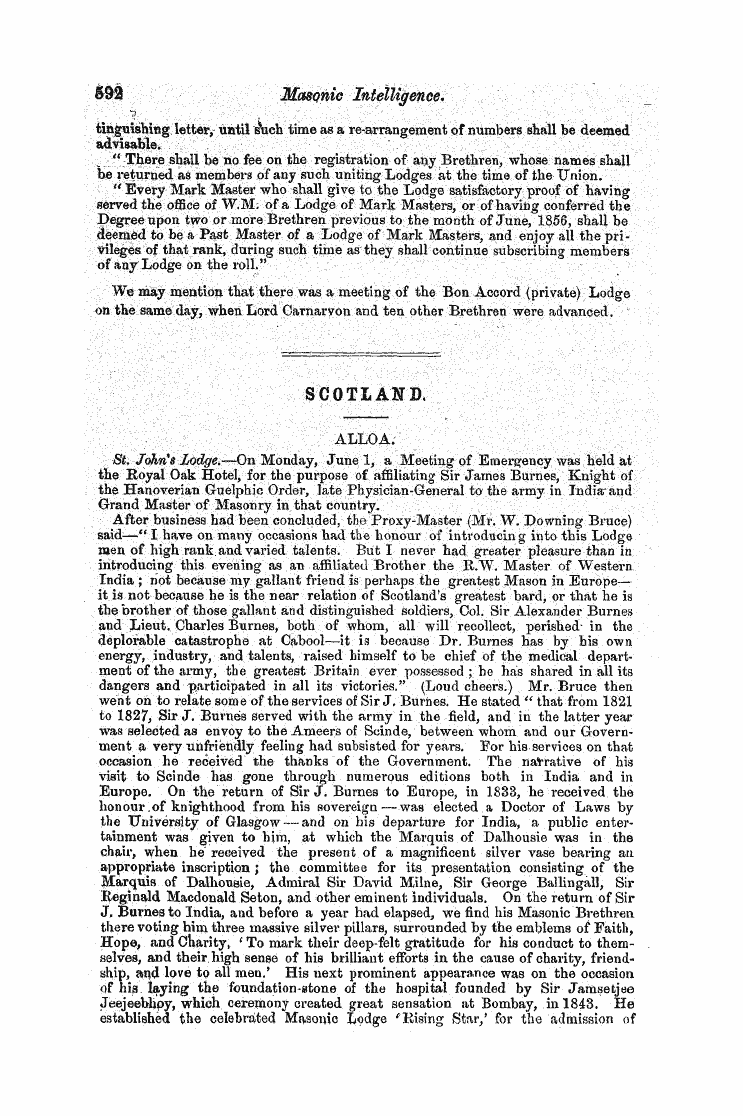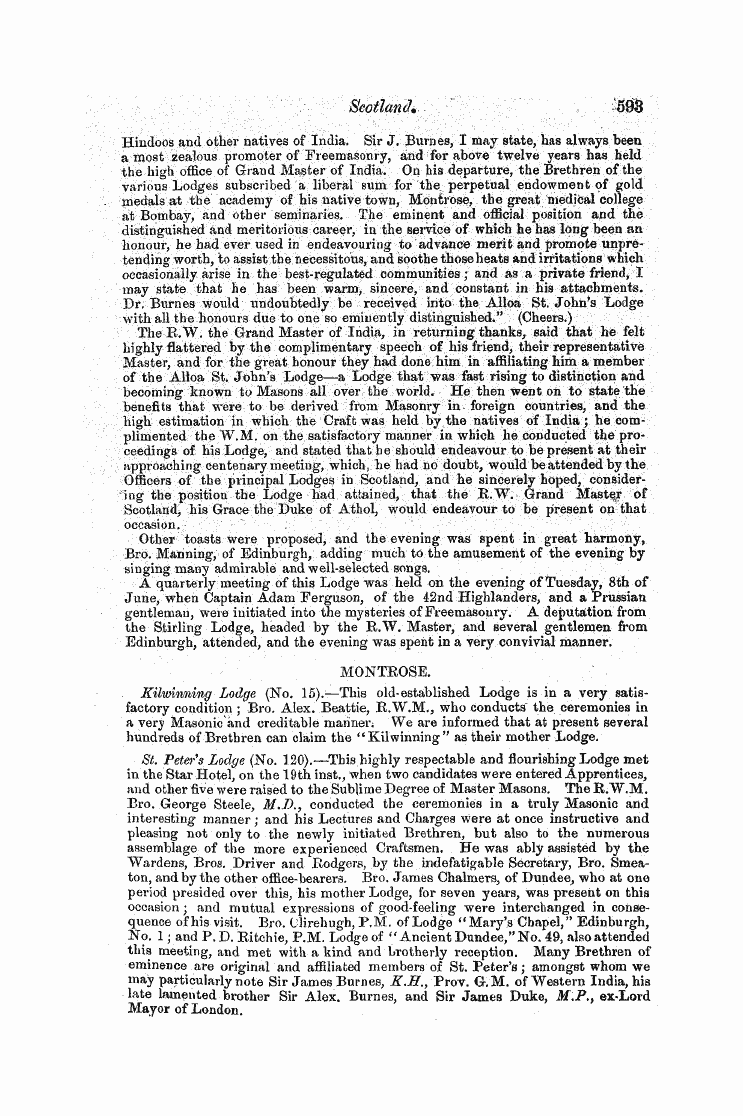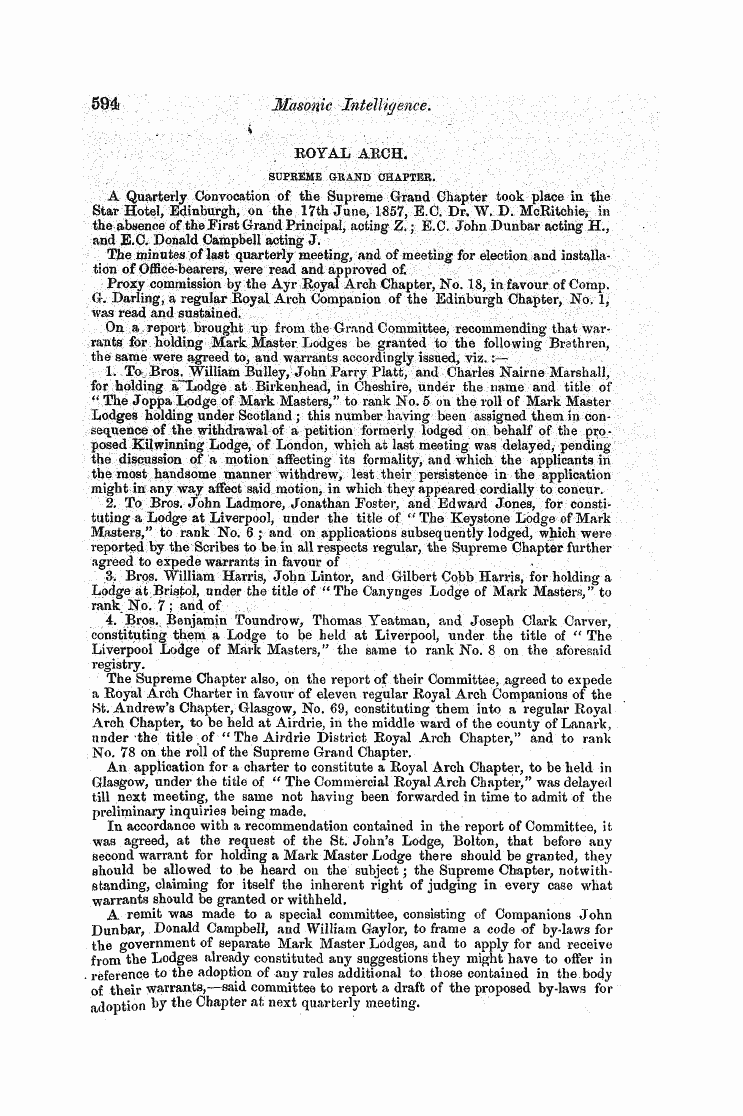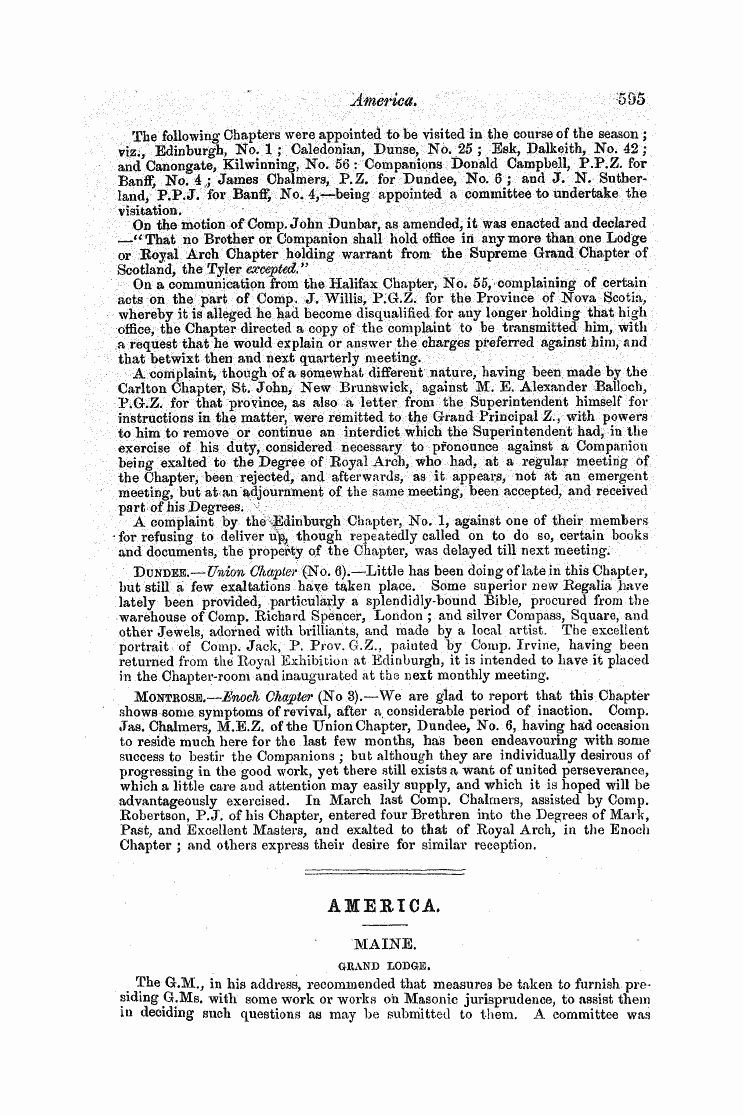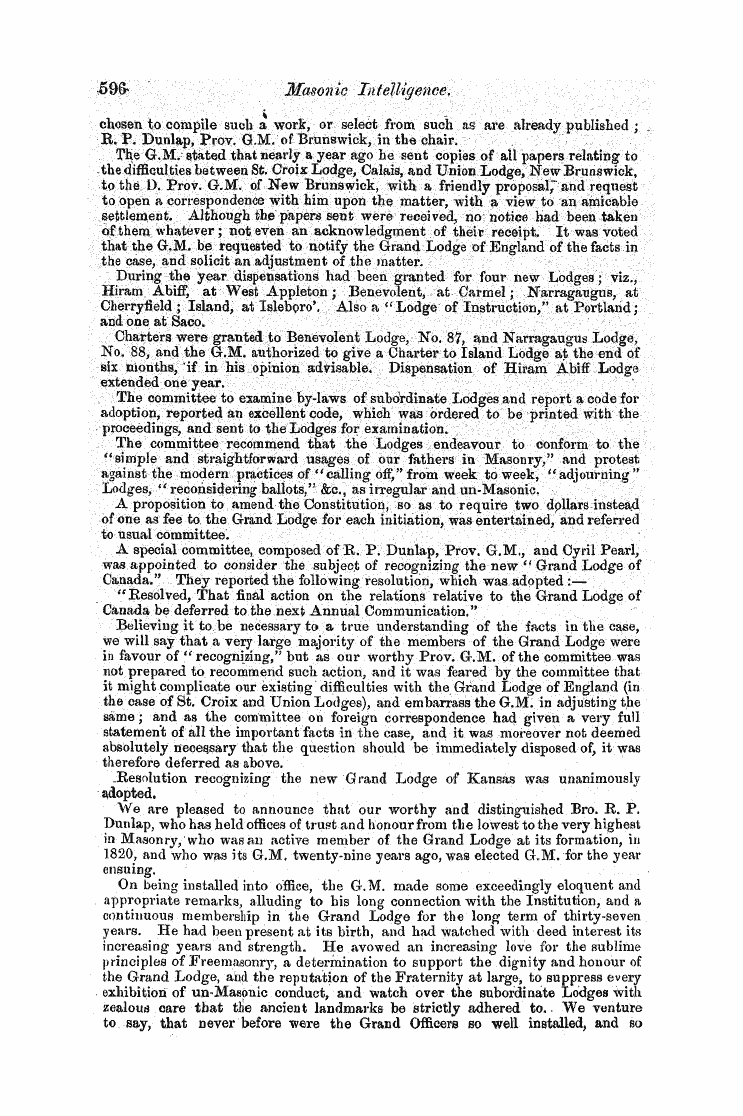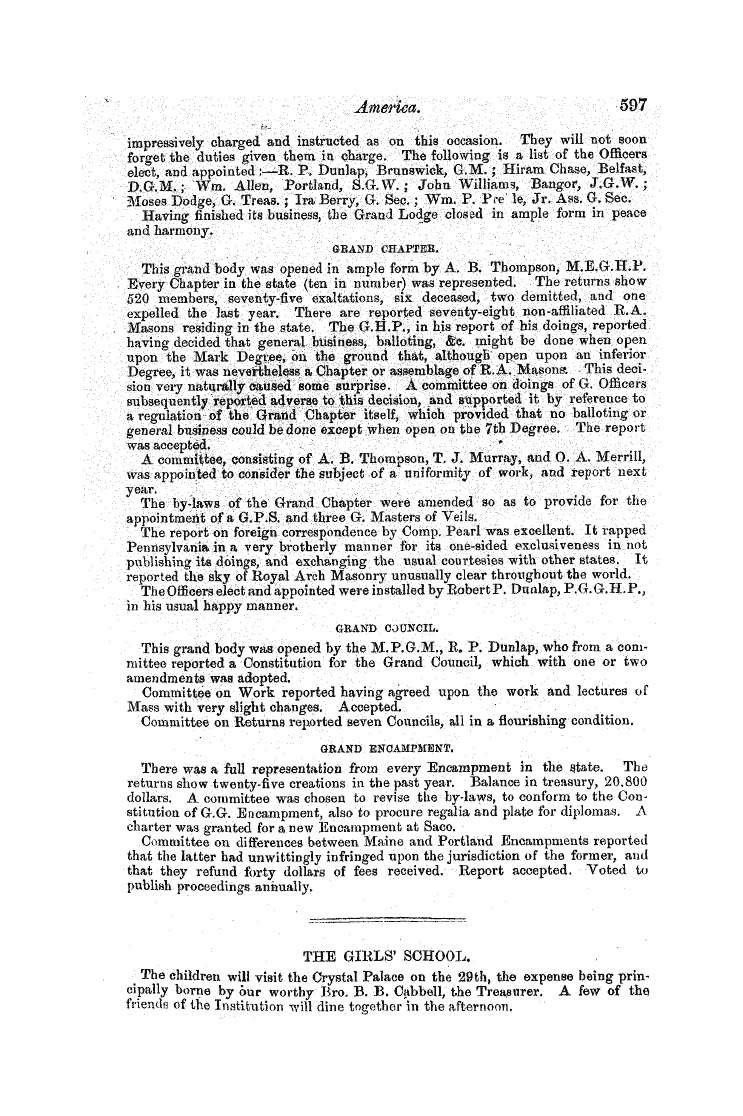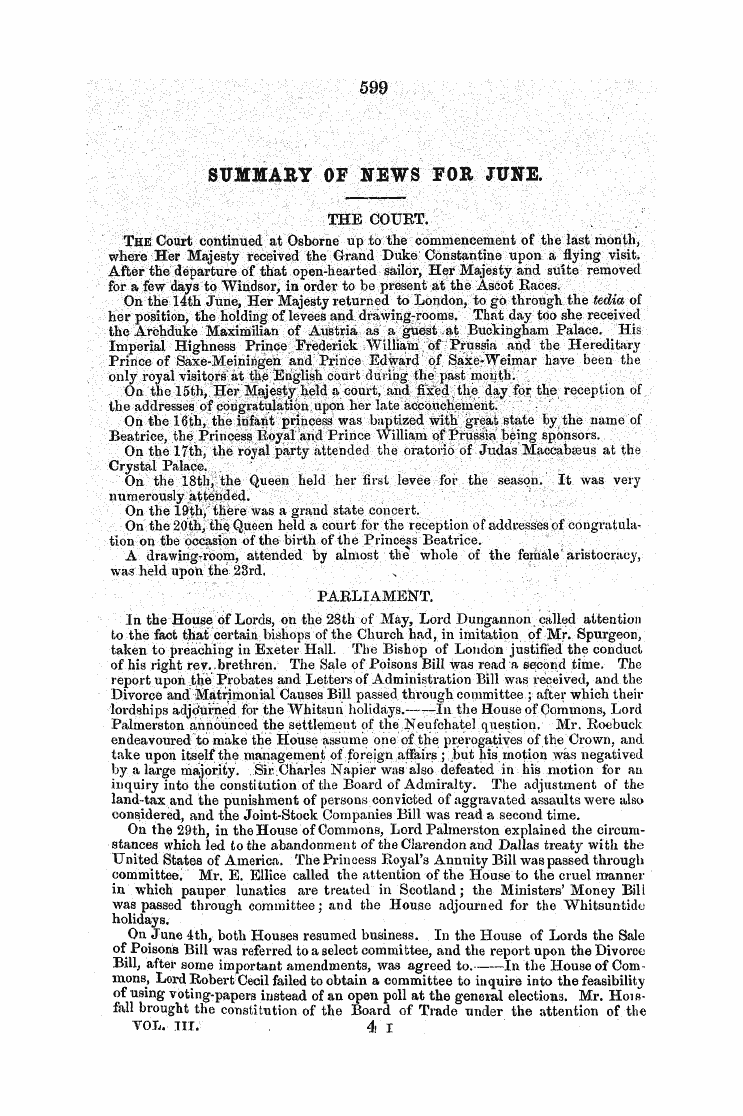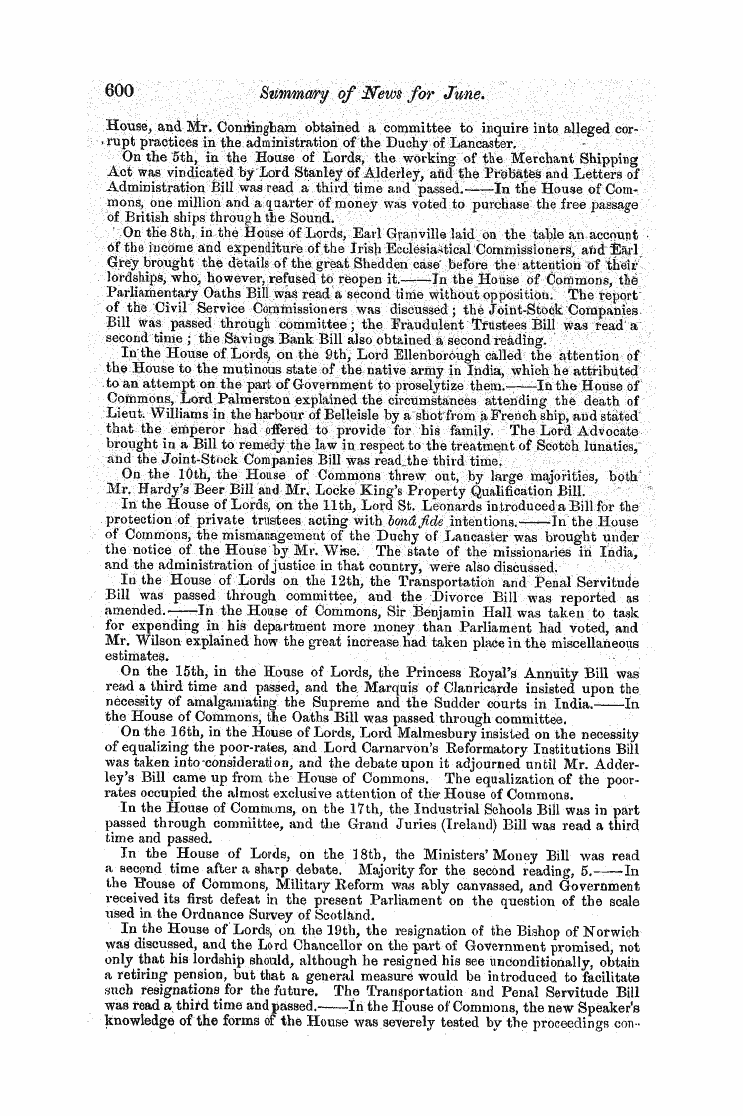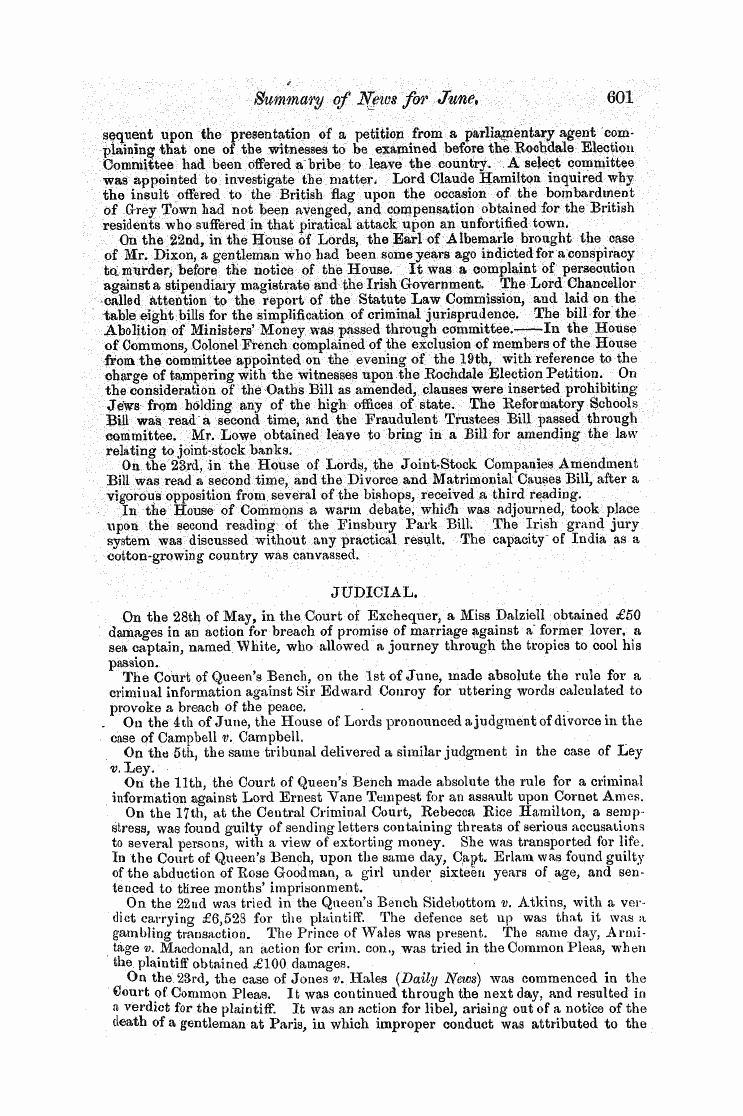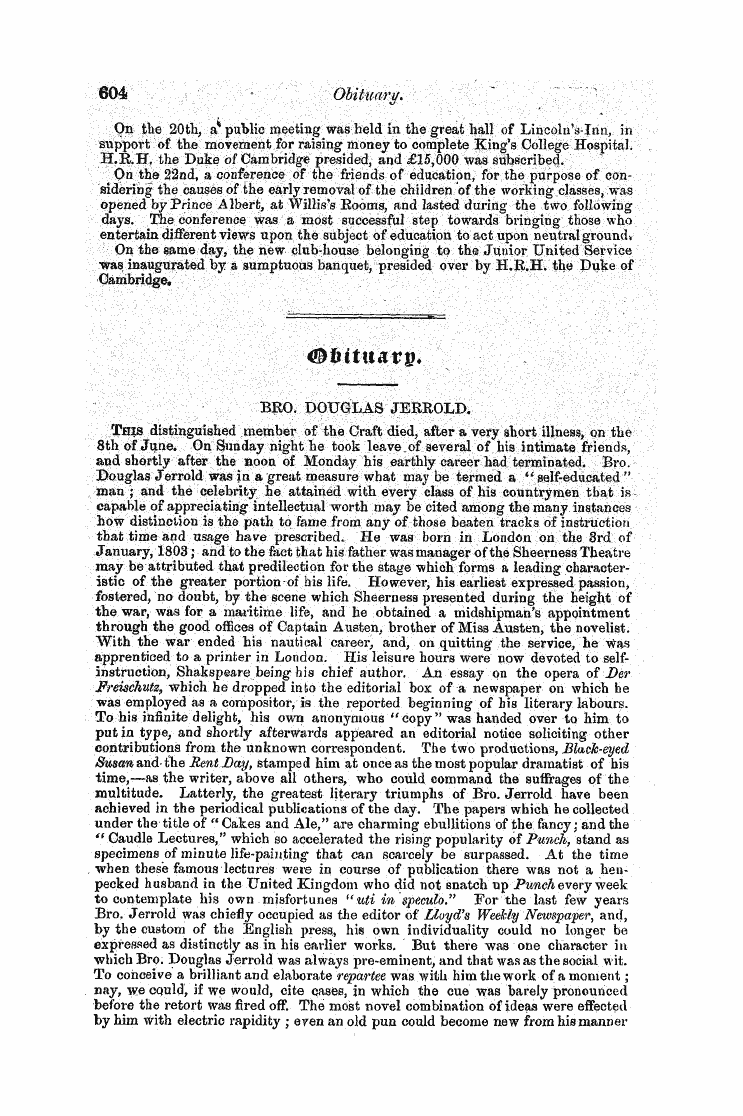-
Articles/Ads
Article igj^piipiii^^ ← Page 8 of 10 →
Note: This text has been automatically extracted via Optical Character Recognition (OCR) software.
Igj^Piipiii^^
1 ^ T ^ ginal date to the v ^ feels satisfied tlhat he has clenched the argument / But does he not remember
that the chronology given to the Scripture narrative is hypbtheiical----that there are five separate cpni |) utatipn ^ containi ng th ^ 1800 years between the highest and lowest accpunts—^ at the dates occurring at the margin of the JBible are the cpmputatm is rapidly giving place to that of Josephus , as corrected by H
On reference to the Scripture account of ^ ^ are not placed in their epnsecutiye order . The 4 th chap ; of the 1 st Book of Kings is a collection of paragraphs selected froin di ^ the impress of haying been written after his death ; yet it is placed immediately before the chapter isbrnmeticing with ! the initiatory proceedings for the building of the Temple . The ^ 6
that portion of it occupied , viz . , ^ eyeh years . But the first v ^ chapter states that he was thirteen pyrn houses v ^ ich from the 1 st yerse of the 8 th ^ after the seven , viz ., f * at the end of twenty pouse of the IiOBD and his own house . " These twenty years would cprnprise th € first half oj M period , in all probability , tha ^
Eew-rhaterials for King Sblom * vhpse conquests and permanent tributes enabled him to lay by immense wPalth for a purpose he had so deeply a , t hefiri David appears ( entitled to much of the lamp of that magnificent struck chased the site ; and furnished the plan of this building . He also re-organized the lievitical Institution , the services of which add
sacredness of the building . The fome of the Temple and the magnificence of King Solomon ' s court spread far and wide . The palaces and cities he was build * ing , the improvements he was making in the metropolis , and his great ^ ^ ^ w ^^ were the theme at every court . The mpnarchs of the surrounding nations became ayare of the riches and magnificence , as well as the superior wisdom of the great king , through the medium of the caravans which were employed to collect the
riches of the nations to add to the grandeur of the city of Zion . It is very pro bable that ope of these caravans acted as guide to the eastern queen , who journeyed thither accompanied with a large retinue , laden with costly presents—the presents most acceptable to the king would be such as were usefu 1 for building his palaces . Gold and precious stones were used in abundance for that purpose , and the amount of gold and precious stones which the Queen of Sheba brought was enormous .
It is evident that the queen ' s visit must have been during the time that King Solomon was enjoying great prosperity and popularity . The wisdom of the king and the magnificence of his court were not more remarkable than the happiness enjoyed by his subjects :- — " Happy are thy men , and happy are these thy servants , " was the exclamation of the astonished queen . The completion of the building of the
Temple and city seems to have been the culminating point of the happiness of the king and his subjects . Years of misrule and heavy exactions pressed heavily upon the land . The death of King Solomon was hailed with satisfaction , as an opportunity for lightening the burdens which weighed the people down . The arrogance of his son and successor produced the fatal cry , — To your tents , O Israel ; now see to thine own house , David , "
I started by stating that the dedication of the Temple , as far as I know , is not alluded to in the ceremony of Installation ( the subject I should imagine to be unapproachable—the Grand Junior Deacon introduced it , not I ) , but I think the Scripture bears internal evidence that the Queen of Sheba visited King Solomon lefore the completion of the magnificent buildings which mrrowidcd the Tempk which is quite sufficient for our traditional history . Let mp take this opportunity to call your attention to a great want of the Craft , viz ., a proper riuthority to whom the Brethren can appeal in all cases of this sort .
Note: This text has been automatically extracted via Optical Character Recognition (OCR) software.
Igj^Piipiii^^
1 ^ T ^ ginal date to the v ^ feels satisfied tlhat he has clenched the argument / But does he not remember
that the chronology given to the Scripture narrative is hypbtheiical----that there are five separate cpni |) utatipn ^ containi ng th ^ 1800 years between the highest and lowest accpunts—^ at the dates occurring at the margin of the JBible are the cpmputatm is rapidly giving place to that of Josephus , as corrected by H
On reference to the Scripture account of ^ ^ are not placed in their epnsecutiye order . The 4 th chap ; of the 1 st Book of Kings is a collection of paragraphs selected froin di ^ the impress of haying been written after his death ; yet it is placed immediately before the chapter isbrnmeticing with ! the initiatory proceedings for the building of the Temple . The ^ 6
that portion of it occupied , viz . , ^ eyeh years . But the first v ^ chapter states that he was thirteen pyrn houses v ^ ich from the 1 st yerse of the 8 th ^ after the seven , viz ., f * at the end of twenty pouse of the IiOBD and his own house . " These twenty years would cprnprise th € first half oj M period , in all probability , tha ^
Eew-rhaterials for King Sblom * vhpse conquests and permanent tributes enabled him to lay by immense wPalth for a purpose he had so deeply a , t hefiri David appears ( entitled to much of the lamp of that magnificent struck chased the site ; and furnished the plan of this building . He also re-organized the lievitical Institution , the services of which add
sacredness of the building . The fome of the Temple and the magnificence of King Solomon ' s court spread far and wide . The palaces and cities he was build * ing , the improvements he was making in the metropolis , and his great ^ ^ ^ w ^^ were the theme at every court . The mpnarchs of the surrounding nations became ayare of the riches and magnificence , as well as the superior wisdom of the great king , through the medium of the caravans which were employed to collect the
riches of the nations to add to the grandeur of the city of Zion . It is very pro bable that ope of these caravans acted as guide to the eastern queen , who journeyed thither accompanied with a large retinue , laden with costly presents—the presents most acceptable to the king would be such as were usefu 1 for building his palaces . Gold and precious stones were used in abundance for that purpose , and the amount of gold and precious stones which the Queen of Sheba brought was enormous .
It is evident that the queen ' s visit must have been during the time that King Solomon was enjoying great prosperity and popularity . The wisdom of the king and the magnificence of his court were not more remarkable than the happiness enjoyed by his subjects :- — " Happy are thy men , and happy are these thy servants , " was the exclamation of the astonished queen . The completion of the building of the
Temple and city seems to have been the culminating point of the happiness of the king and his subjects . Years of misrule and heavy exactions pressed heavily upon the land . The death of King Solomon was hailed with satisfaction , as an opportunity for lightening the burdens which weighed the people down . The arrogance of his son and successor produced the fatal cry , — To your tents , O Israel ; now see to thine own house , David , "
I started by stating that the dedication of the Temple , as far as I know , is not alluded to in the ceremony of Installation ( the subject I should imagine to be unapproachable—the Grand Junior Deacon introduced it , not I ) , but I think the Scripture bears internal evidence that the Queen of Sheba visited King Solomon lefore the completion of the magnificent buildings which mrrowidcd the Tempk which is quite sufficient for our traditional history . Let mp take this opportunity to call your attention to a great want of the Craft , viz ., a proper riuthority to whom the Brethren can appeal in all cases of this sort .
















































